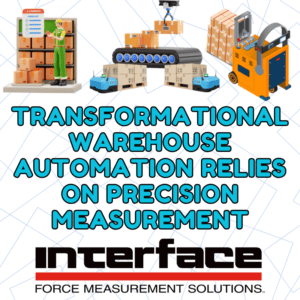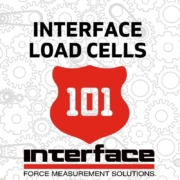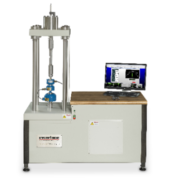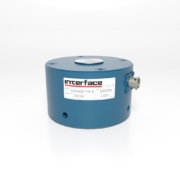Transformational Warehouse Automation Relies on Precision Measurement
 Force and torque sensors are essential in modern warehouses, enabling automation and optimization across various applications. These sensors measure the physical and rotational forces acting on an object, providing critical data for tasks ranging from robotic arm control to preventing overload in material handling equipment.
Force and torque sensors are essential in modern warehouses, enabling automation and optimization across various applications. These sensors measure the physical and rotational forces acting on an object, providing critical data for tasks ranging from robotic arm control to preventing overload in material handling equipment.
Whether designing a humanoid package handler or establishing weight restrictions in mobility machines, accurate measurement is crucial for safety, efficiency, and cost-effectiveness.
Examples of Sensor Technology Enabled Warehouse Use Cases
Weighing and Sorting: Accurate weight measurement is crucial for shipping and logistics. Smart scales with force sensors can automatically weigh packages and pallets, ensuring correct shipping costs and preventing overloading. This data can also be used to sort items based on weight, optimizing storage and retrieval processes.
In the following application, our customer requires an accurate inventory weighing solution. This application highlights the transformative automation happening in warehouses. Interface suggests installing MBI Overload Protected Miniature Beam Load Cells under each corner of the inventory shelves. A JB104SS 4-Channel Stainless Steel Junction Box is connected to each load cell and to a WTS-AM-1E that wirelessly transmits the sum weight to the WTS-BS-1-HA Wireless Handheld Display for multiple transmitters, and the WTS-BS-6 Wireless Telemetry Dongle Base Station when connected to the customer’s PC. Results can be displayed, logged, graphed, and seen in real-time.
Autonomous Mobile Robots (AMRs): AMRs rely on force and torque sensors for safe and efficient navigation. These sensors help AMRs detect obstacles, avoid collisions, and adjust their real-time movements. Force sensors also play a role in tasks like picking and placing items, ensuring the correct force is applied to handle objects without causing damage. The adoption of AMRs in warehouses is expected to increase significantly, with the market projected to reach $8.08 billion by 2027. (Source: Statista). Get more information about Interface solutions for AMRs here.
Smart Pallets: Smart pallets embedded with force sensors can monitor the weight of goods in real time, providing valuable data for inventory management and theft prevention. This data can also be used to optimize pallet loading and prevent overloading, improving safety and efficiency. Watch how our solutions are used in a small pallet application:
Robotics and Automation: Load cells and torque transducers are essential for pick-and-place operations in robotic arms and grippers. These sensors enable robots to handle delicate items precisely, preventing damage and ensuring accurate placement. Learn more in Robotic Solutions
Quality Control: Force and torque measurement can assess the quality of goods and packaging. Sensors can detect inconsistencies in packaging seals or identify products that may have been damaged during transit. Learn more about Interface’s role in manufacturing quality assurance.
Interface Solutions for Warehouse Automation
Interface empowers the future of warehouse automation with precise and reliable measurement solutions. Our sensors are designed to provide accurate, reliable data in demanding industrial environments, withstanding temperature fluctuations, dust, and vibration. We offer a wide range of sensors to meet the specific needs of various applications, including:
Load cells help prevent overload and ensure accurate weighing for optimized shipping and reduced costs. They are used in designing, testing, and monitoring warehouse equipment, including cranes, lifts, cobots, pallet movers, scales, and autonomous mobile robots. They are also ideal for conveyor systems, automated guided vehicles (AGVs), and robotic palletizers.
Miniature load cells enhance safety and efficiency in compact machinery by precisely monitoring weight and movement. Applications include conveyors and lifting machines where space is limited.
Torque transducers enable precise robotic control, improving worker safety and minimizing product damage. They are common in robotics, including arms control and quality control.
Multi-axis sensors for complex applications requiring measurement of forces and torques in multiple directions.
Instrumentation to utilize data for continuous monitoring of warehouse operations and equipment, providing valuable insights for optimization.
Wireless Telemetry Systems are powerful tools that provide real-time insights into your warehouse operations for data-driven decisions and improved productivity. Integrate sensor technologies and digital instrumentation into IoT environments for easy deployment and advancements in communication capabilities with other devices.
Load pins, load shackles, and tension load links are essential for overhead cranes, lifting systems, and securing heavy loads during transportation. They are valuable in a warehouse setting for continuously measuring loading and moving heavy objects throughout the warehouse distribution and transportation sectors.
Interface offers custom engineering services to develop tailored sensors and complete system solutions for unique warehouse automation challenges.
Four Transformative Impacts on the Warehouse Industry
The adoption of high-accuracy measurement technology is driving significant changes in the warehouse industry, including:
- Increased Efficiency: Automation powered by force and torque sensors streamlines warehouse operations, reducing manual labor and improving throughput.
- Improved Accuracy: Automated systems minimize human error, leading to more accurate order fulfillment and reduced shipping costs.
- Enhanced Safety: Force and torque sensors contribute to a safer working environment by preventing collisions, overloading, and other hazards.
- Data-Driven Optimization: The data collected by force and torque sensors provides valuable insights into warehouse operations, enabling data-driven decisions to optimize processes and improve overall performance.
Force and torque measurement is crucial in transforming the warehouse industry. As automation advances, the importance of these technologies will only grow. Force and torque sensors provide accurate and reliable data, enabling warehouses to operate more efficiently, safely, and accurately.
E-commerce growth is a major driver of warehouse automation. The global warehouse automation market is expected to reach $30.15 billion by 2026, growing at a CAGR of 14.1% from 2021 to 2026. (Source: Allied Market Research) The Adoption of sensor technologies, including Interface measurement devices, supports the growth and development of warehouse automation worldwide.
Partnering with Interface provides access to our expertise, custom solutions, and dedicated support to help you achieve your warehouse automation goals. Contact Interface today to learn how our measurement solutions can optimize your warehouse operations.









